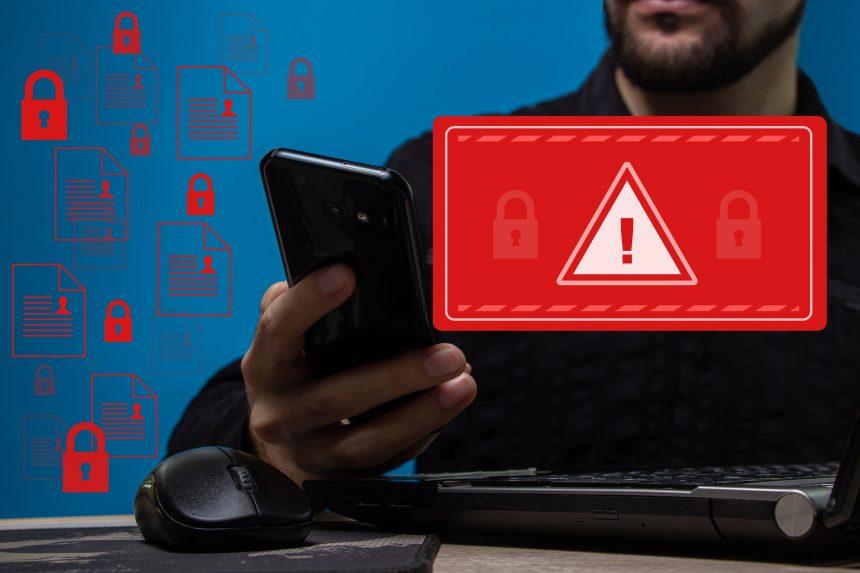CraxsRAT Android malware has emerged as a significant concern for mobile device users. This sophisticated Remote Access Trojan (RAT) infiltrates Android devices, providing cybercriminals with extensive control over infected systems. This article delves into the workings of CraxsRAT, its impact on compromised devices, detection methods, and a thorough removal guide, along with best practices to prevent future infections.
What is CraxsRAT?
CraxsRAT is a type of Remote Access Trojan (RAT) designed specifically to target Android devices. Once installed, it grants attackers remote control over the device, enabling them to steal sensitive information, spy on user activities, and even manipulate the device’s functionality. This malware is typically distributed through malicious apps, phishing campaigns, or compromised websites.
Actions and Consequences of CraxsRAT
Upon successful infiltration, CraxsRAT can perform a variety of malicious activities, including:
- Data Theft: Stealing personal and financial information such as passwords, banking details, and contacts.
- Surveillance: Capturing keystrokes, taking screenshots, and recording audio and video.
- Device Manipulation: Sending SMS messages, making calls, and installing or uninstalling apps.
- System Control: Accessing and altering system settings, files, and other critical functionalities.
The consequences of CraxsRAT infection can be severe, ranging from financial loss and privacy breaches to unauthorized transactions and identity theft. Moreover, compromised devices can be used as part of a botnet, contributing to larger-scale cyberattacks.
Detection Names for CraxsRAT
Security researchers and antivirus vendors have identified CraxsRAT under various detection names, including but not limited to:
- Android/CraxsRAT
- Trojan.AndroidOS.CraxsRAT
- Android/Spy.CraxsRAT
- Android/RemoteAdmin.CraxsRAT
Similar Threats
CraxsRAT is part of a broader category of mobile malware known as Remote Access Trojans. Similar threats include:
- SpyNote RAT: Another RAT that targets Android devices, capable of stealing data and controlling device functions.
- Cerberus: A banking Trojan with RAT capabilities, used to steal financial information.
- Anubis: Known for its keylogging and screen recording abilities, often used in phishing attacks.
Removal Guide for CraxsRAT
Step 1: Enter Safe Mode
- Press and hold the power button until the power menu appears.
- Tap and hold the “Power off” option until the “Reboot to safe mode” prompt appears.
- Tap “OK” to reboot into safe mode. This will disable third-party apps.
Step 2: Uninstall Suspicious Apps
- Go to “Settings” > “Apps” or “Applications”.
- Look for any unfamiliar or recently installed apps that you did not download.
- Tap on the suspicious app and select “Uninstall”.
Step 3: Clear Cache and Data
- Go to “Settings” > “Storage”.
- Tap on “Cached data” and select “Clear cache”.
- Navigate to “Settings” > “Apps”.
- Tap on each app and select “Clear data” if necessary.
Step 4: Check for Device Administrators
- Go to “Settings” > “Security” > “Device administrators”.
- Ensure that no suspicious apps have administrator access.
- If any suspicious apps are listed, deactivate their admin privileges and uninstall them.
Step 5: Reset Network Settings
- Go to “Settings” > “System” > “Reset options”.
- Select “Reset Wi-Fi, mobile & Bluetooth” and confirm the reset.
Step 6: Factory Reset (if necessary)
- Backup your data to a secure location.
- Go to “Settings” > “System” > “Reset options”.
- Select “Erase all data (factory reset)” and confirm.
- Follow the on-screen instructions to complete the reset.
Best Practices for Preventing Future Infections
- Install Apps from Trusted Sources: Only download apps from official app stores like Google Play Store. Avoid third-party app stores and unknown sources.
- Enable Google Play Protect: Regularly scan your device for malicious apps using Google Play Protect.
- Keep Software Updated: Ensure your Android OS and all installed apps are up-to-date with the latest security patches.
- Use Strong Passwords: Implement strong, unique passwords for all accounts and enable two-factor authentication where possible.
- Be Wary of Phishing Attempts: Avoid clicking on suspicious links or downloading attachments from unknown sources.
- Monitor App Permissions: Regularly review app permissions and revoke any that seem unnecessary or overly intrusive.
- Install Mobile Security Software: Consider using a reputable mobile security solution to provide an additional layer of protection.
Conclusion
CraxsRAT represents a significant threat to Android users, with its ability to control devices and steal sensitive information. By understanding its actions, recognizing its detection names, and following a comprehensive removal guide, users can mitigate the risks associated with this malware. Additionally, adhering to best practices for mobile security can help prevent future infections and safeguard personal data.





